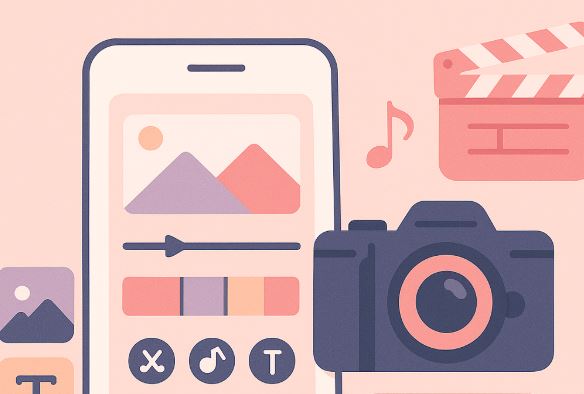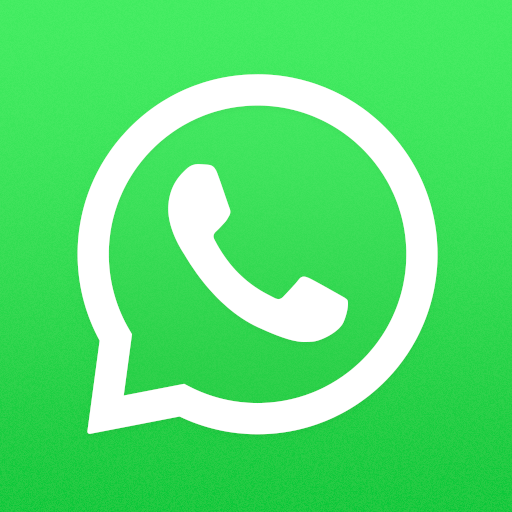How to turn off ads on YouTube
27th April 2024
Jake Hopkins
Tired of sitting through those pesky ads on YouTube? You're not alone. From annoying interruptions to unnecessary distractions, there are plenty of reasons why people want to turn off ads on the popular video platform.
We'll guide you through the steps to disable those ads on both your phone and computer. We'll also explore the potential limitations of ad-free viewing and offer alternative ways to support your favorite YouTubers without watching ads. Let's get started!
What Are Ads on YouTube?
Ads on YouTube are promotional messages that are displayed on various parts of the platform to generate revenue for content creators and YouTube itself. These ads can be in the form of video ads, display ads, sponsored content, or targeted and personalized ads based on user preferences and viewing history.
Video ads are one of the most common types on YouTube, usually shown before, during, or after a video. Display ads are static image ads that appear alongside the video player or on the search results page. Sponsored content entails influencers partnering with brands to promote their products.
Targeted and personalized ads leverage user data to deliver relevant ads. YouTube's ad policies ensure compliance with guidelines regarding content suitability. The revenue generated from these ads helps creators earn money and enables YouTube to operate and provide a free platform for users. While ads are crucial for revenue, striking a balance to maintain a positive user experience is also key.
Why Do People Want to Turn Off Ads on YouTube?
People want to turn off ads on YouTube due to the annoyance and interruption caused by continuous advertisements during their video viewing experience. It is about gaining control over the content they consume and avoiding interruptions that can disrupt their viewing pleasure and user privacy.
Viewers seek to disable ads on YouTube to create a seamless watching experience that allows them to enjoy their favorite content uninterrupted. By opting for ad-free viewing, users can focus solely on the videos they are interested in without having their viewing flow disrupted by commercials. Managing ad preferences enables users to tailor their content consumption to suit their interests and preferences, fostering a more personalized viewing experience.
Annoyance
Annoyance from ads on YouTube stems from the constant interruptions they create while users are trying to enjoy video content. Users who seek an ad-free experience often resort to ad blockers or methods to stop ads from disrupting their viewing.
These interruptions can lead to frustration and detract from the overall viewing experience. Whether it's an unskippable ad that pops up, or a mid-roll ad that disrupts the flow of a video, these interruptions can be quite bothersome.
Understanding the significance of ad relevance control and placement becomes crucial in these situations. By ensuring that ads are relevant to the viewer and strategically placed, the annoyance factor can be significantly reduced. Users appreciate when ads are non-intrusive and provide value, rather than simply being a disruptive element in their viewing journey.
Distraction
Distraction from ads on YouTube can take users away from the content they are trying to watch, impacting their engagement and overall experience. Viewers often prefer an ad-free experience to avoid these distractions.
Ads that pop up during a video can disrupt the flow, interrupting the viewer's train of thought and diverting their attention from the main topic. This can lead to frustration and a decrease in engagement with the content.
Ad blockers or ad skipping options provide users with the ability to bypass these interruptions, allowing them to focus solely on the videos they wish to watch. By utilizing these tools, viewers can create a seamless viewing experience without the distractions that ads often bring.
Data Usage
Ads on YouTube can contribute to increased data usage, particularly with video ads that consume bandwidth. The frequency and tracking of ads can also impact data consumption, especially when personalized ads are displayed.
For users looking to manage their data usage effectively, understanding the different ad formats and tracking mechanisms can be beneficial. By controlling the visibility and customization of ads, individuals can tailor their viewing experience to align with their data limits. Opting for skippable ads or adjusting settings to limit ad tracking can help reduce unnecessary data usage. Users can explore ad-free subscription options or consider pre-downloading content to watch offline, minimizing the reliance on streaming and thereby conserving data.
How to Turn Off Ads on YouTube on Your Phone?
To turn off ads on YouTube on your phone, you can utilize various methods such as adjusting ad settings within the YouTube app, exploring ad preferences, or using ad blockers specifically designed for mobile devices.
- One way to disable ads on YouTube is by opening the YouTube app on your phone and tapping on your profile picture to access the 'Settings' menu.
- From there, navigate to 'General' settings and look for 'Ad personalization.'
- Here, you can toggle off the option for personalized ads.
You can further enhance your ad-free experience by installing ad blockers like Adblock Plus or AdGuard on your mobile device. These blockers can effectively prevent ads from appearing while you enjoy uninterrupted content on YouTube.
YouTube Premium
One way to enjoy an ad-free experience on YouTube on your phone is by subscribing to YouTube Premium, a premium membership that eliminates ads and provides additional features to enhance the user experience.
YouTube Premium not only offers ad-free viewing but also allows users to watch videos offline, play videos in the background while using other apps, and access YouTube Originals.
For content creators, the subscription model of YouTube Premium provides a stable source of revenue, as they receive a share of the subscription fees from Premium members. This helps content creators to continue producing high-quality videos without solely relying on ad revenue.
By monetizing through Premium subscriptions, YouTube can diversify its revenue streams and lessen its dependency on traditional advertising.
AdBlocker Apps
Users can also leverage AdBlocker Apps on their phones to block ads on YouTube effectively. These applications help in preventing ads from displaying during video playback, ensuring a seamless ad-free experience.
By using an AdBlocker App, viewers can enjoy uninterrupted video content without being interrupted by annoying commercials or pop-ups. Some popular ad-blocking software for mobile devices include AdGuard, Adblock Plus, and AdLock.
To install an AdBlocker App, users can simply go to their app store, search for their preferred ad-blocking software, download it, and follow the on-screen instructions to set it up. Once installed, users can customize their ad-blocking preferences, whitelist certain sites, and enjoy a hassle-free viewing experience on YouTube and other platforms.
How to Turn Off Ads on YouTube on Your Computer?
When using YouTube on your computer, there are multiple ways to turn off ads, such as adjusting ad settings on the YouTube website, exploring ad preferences, or utilizing ad-blocking extensions for browsers to create an ad-free browsing experience.
To adjust ad settings on YouTube, simply log in to your account, click on your profile picture at the top right corner, then select 'Settings' from the dropdown menu. In the Settings section, navigate to the 'Playback and performance' tab, where you can toggle the switch to disable interest-based ads. You can explore your ad preferences by clicking on 'Ad settings' within the Settings menu to customize the types of ads you see. If you prefer a more robust solution, consider installing popular ad-blocking extensions like AdBlock Plus or uBlock Origin on your browser for a seamless viewing experience without interruptions.
YouTube Premium
Subscribing to YouTube Premium on your computer is a convenient way to eliminate ads and enjoy an uninterrupted viewing experience. The premium membership offers ad-free content and additional benefits to enhance user satisfaction.
By subscribing to YouTube Premium, users can enjoy the ability to download videos for offline viewing, background play to listen to content without having the app open, and access to YouTube Originals. These features not only enhance the overall user experience but also contribute to generating revenue for creators as they receive a share through YouTube Premium subscriptions. This model provides an alternative source of income for content creators and helps in diversifying their monetization strategies beyond traditional ad revenue.
AdBlocker Extensions
AdBlocker Extensions for browsers can effectively block ads on YouTube when using a computer. These extensions provide users with the ability to customize their ad-viewing experience by preventing ads from appearing during video playback.
By installing an ad blocker extension, users can enjoy uninterrupted viewing without the annoyance of pop-up ads or pre-roll commercials disrupting their video content. This not only enhances the overall user experience but also improves page loading times by eliminating bandwidth-consuming ads.
Some popular ad-blocking extensions for browsers include AdBlock Plus, uBlock Origin, and AdGuard. To install an ad blocker, simply navigate to your browser's extension store, search for the preferred ad-blocking extension, and click on 'Add to Browser.' Once installed, users can usually customize their ad-blocking settings to suit their preferences, ensuring a seamless and ad-free browsing experience on YouTube.
What Are the Limitations of Turning Off Ads on YouTube?
While turning off ads on YouTube can provide an ad-free viewing experience, it may lead to limitations such as restricted access to certain content that relies on ad revenue, impacting the availability of ad-supported services and personalized recommendations.
By disabling ads, users might miss out on valuable promotional offers or information about products and services that could be relevant to them. Ad interruptions, though sometimes disruptive, help in maintaining the balance between providing free content and supporting creators financially.
The lack of targeted advertising due to ad restrictions can result in less relevant content being recommended, affecting the overall user experience and potentially limiting the ability of creators to reach their target audience effectively."
Limited Content Access
One of the limitations of turning off ads on YouTube is the potential for limited content access as certain videos or channels may be restricted to ad-supported viewers only. This restriction can impact the availability of diverse content offerings on the platform.
Viewers who choose to disable ads might find themselves excluded from accessing premium or exclusive content that is only available to those who support the creators through ad viewing. Ad-supported viewers may enjoy uninterrupted access to a wider range of videos and channels.
The issue of limited content access becomes more pronounced when users encounter restrictions or limitations due to ad-blocking practices. Ad interruptions during video playback can disrupt the viewing experience and lead to frustration among users who prefer uninterrupted content consumption.
Controlling ad placement and ensuring relevance can play a vital role in determining which viewers are granted access to certain content, thereby affecting the overall user experience on the platform.
Loss of Support for Creators
By turning off ads on YouTube, viewers may inadvertently reduce the support available for content creators who rely on ad revenue as a significant portion of their income. This loss of support can impact the effectiveness, engagement, and visibility of ads created by creators.
Ads play a crucial role in allowing creators to monetize their content and continue producing high-quality videos. When ads are turned off, creators face a significant challenge in generating revenue to sustain their channels and projects. This limitation can lead to a decline in ad performance metrics, such as click-through rates and audience reach, ultimately affecting the overall success of the creator's content.
Without the support from ad revenue, creators may struggle to invest in better equipment, collaborations, or creative projects that would enhance the viewer experience and growth potential of their channels.
How to Support Your Favorite YouTubers Without Watching Ads?
Supporting your favorite YouTubers without watching ads can be achieved through alternative methods such as contributing on platforms like Patreon, purchasing merchandise from creators, or making direct donations to support their content creation efforts.
These alternative methods not only provide financial support to creators but also foster a closer connection between the content creator and their audience. Platforms like Patreon allow fans to become patrons of their favorite YouTubers by offering exclusive perks and behind-the-scenes content in exchange for a monthly subscription fee. Purchasing merchandise, such as t-shirts, hats, or mugs, not only helps spread the word about the creator but also gives fans a tangible way to show their support. Direct donations through services like PayPal or Ko-fi can provide immediate assistance to content creators in funding new projects or upgrading equipment.
Patreon
Patreon offers a platform for viewers to support their favorite YouTubers directly through donations, memberships, or exclusive content subscriptions, providing an alternative revenue stream that reduces the dependence on ad-supported services.
By contributing to creators via Patreon, supporters can help them sustain their channels without solely relying on ad revenue. These direct financial contributions enable YouTubers to pursue their passion projects, improve content quality, and maintain creative independence.
Patreon members gain access to exclusive perks such as behind-the-scenes footage, personalized shoutouts, merchandise discounts, and early access to videos. This personalized and direct interaction between creators and their patrons fosters a sense of community and appreciation.
Diversifying revenue streams through Patreon not only empowers creators but also enhances the overall viewing experience for supporters.
Merchandise
Purchasing merchandise from your favorite YouTubers is another way to show support and contribute to their content creation endeavors while reducing the reliance on ad revenue and ad-supported services. Merchandise sales offer a direct channel for fans to engage and support creators.
This direct fan engagement not only fosters a stronger sense of community between creators and their audience but also provides a more sustainable source of income. By selling branded products like apparel, accessories, and other items, YouTubers can diversify their revenue streams and decrease their dependency on fluctuating ad rates. Merchandise serves as a tangible representation of a YouTuber's brand, allowing fans to feel a deeper connection and proudly showcase their support in the real world.
Donations
Making direct donations to your favorite YouTubers is a straightforward way to support their content creation efforts without relying on ad revenue or ad-supported services. Donations offer viewers a direct means of contributing to creators and expressing their appreciation.
By donating, viewers play a crucial role in supplementing the income of YouTubers, enabling them to invest in better equipment, software, and resources to enhance the quality of their content. This financial support goes beyond the fluctuating nature of ad revenue, providing creators with a more stable source of income. Donations can strengthen the bond between viewers and creators, fostering a closer relationship and a sense of community around the content being produced.















